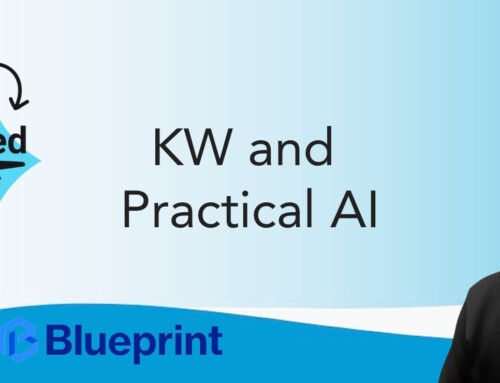I was inspired by a Facebook post the other day that asked the question – “Name One Thing That Government Has Made Cheaper and More Efficient.” Ok – it was not really a question. But it was a command that begged a question.
As I looked though the answers, I could only be humored by the banter posted by some people that I knew, others that I did not know. For a while, I also contemplated a list of answers. I even did a bit of research. Then I started to break down the question. First with “Government” – National, State, County, City, Village, Town, and so on, I wanted to know which government. Then I turned to Things. What are things that Government…. Yadda Yadda. After toiling with the game in my mind, I came up with my post.
Victor Lund, perhaps you are asking the wrong question.
What I did not write was that the better question would be “Name One Thing that the Government Has Made Better.” Surely the answers would be different.
Let’s forget government, what have innovators and disruptors in real estate made cheaper or more efficient?
We read so much about innovation and disruption in our industry. Heck, my friend Brad Inman has created an entire publication focused around innovation and disruption. If you do not read Inman News, you should. Brad may not appreciate my characterization of his publication, but he will understand that it is in good character and not intended to lay shade.
With that said. Why is our industry so obsessed by innovation and disruption? Why do we get so smoking hot about it? I did a little research, and found that a Stanford University computer scientist who started something called the Institute for the Future studied this. His name was Roy Amara and sadly he passed away recently. It would have been great to give him a call and take him for coffee. The great thing about California is that really cool people will meet you for coffee if you just ask them. This guy studied innovation and came up with an elegant observation called Amara’s Law.
Amara’s Law is that “we tend to overestimate the impact of a new technology in the short run, but we underestimate it in the long run.”
It’s natural to get super excited about something that could work, only to realize that for anything to work, it takes work. That being said, learning something new and creating change leads to disappointment because the struggle is real. But every now and then, someone puts in the hard work and pushes though. Eventually there is a ray of light and eureka! It works. After the initial hype subsides, there is a lull and then a second wave occurs.
Redfin
As I contemplate this, I think of Redfin. For years, brokers have been flailing around with their websites, but one Seattle broker poured his heart and soul into it. Argue if you must, but Redfin has kicked every broker to the curb because the redfin.com website is their undeniable passion. First and foremost, above all else – redfin.com is the most important thing to Redfin. They disrupted the brokerage offering online through pure focus.
For years, everyone was incensed about redfin.com, paper brokers, virtual office websites, IDX sharing, display rules, and all of that. Redfin had to battle. They even needed to work with the Department of Justice and the Federal Trade Commission to calm the waters and allow redfin.com to push forward. Nobody in the industry liked Redfin’s website innovation, but consumers love it.
For about 15 years, Redfin has been pushing forward with redfin.com. It is the top visited broker website in America. The only sites that they have not overtaken yet are the advertising portals who are buying traffic. Redfin has consumer ratings, and everyone I speak to loves the site. They even offer the same full-service agents as other real estate firms for 1/3 of the price. With all of that going for Redfin, you would think that they would have 20%, 30%, or more market share in American real estate. Right? Their market share is about 1%. In 2016 they did about 40,000 transactions. I am sure that they have grown since 2016, but probably short of the 100,000 trades that regional powerhouse Howard Hanna transacts each year. Mind you that the total number of transactions in America is pegged at around 5.5 Million by NAR. That equates to 11 million sides by a little over a million Realtors®.
Redfin has mostly disrupted where consumers get property information, not how they buy and sell homes. The industry overestimated Redfin. But if Amara’s Law holds true, the best is yet to come for them.
Zillow
Another innovator or disrupter is Zillow. They disrupted the industry by answering the question, “What’s my home worth.” They went even further by letting everyone see what any home is worth. The brilliance is fundamental. They found their way into the brains of consumers. Before consumers buy or sell, they need some basis for a price tag. In terms of Amara’s Law, I would say that they have been overestimated in terms of disruption in many ways except for one. Zillow absolutely crushed newspapers who derived a significant portion of their revenue from real estate advertising. Before Zillow, it was not uncommon for a 300-agent real estate firm to spend $1 Million or more. Those same firms spend nothing on the newspaper or some small amount like $50k-$100k. More profoundly, I think that Zillow’s impact to newspapers caused them to decimate their editorial staff and give rise to Fake News. But they have not really disrupted the way that real estate is bought or sold. Consumers did not rush to adopt “make me move,” and ignite a FSBO revolution. However, like Redfin they have amassed a massive amount of consumer traffic. I would expect that Zillow provided information on their sites that impacted every one of those 5.5 Million trades in some way. Their true innovation and disruption is probably on the horizon. The lasting impact of Zillow has not really been felt by the real estate industry yet.
DocuSign
DocuSign has been a true innovation that may have been underestimated at first, contrary to Amara’s Law. They killed the fax machine. It has made life better for real estate and consumers in a profound way. I don’t think anyone ever became obsessed with DocuSign. Every industry just found themselves adopting it because it is the best. I sign everything on my phone. Press and hold a document attachment, open in DocuSign, click and done. I would never go back. I would not even switch. Everything that I have signed since about 2010 is in my DocuSign account, protected by the best security you could imagine.
Amara’s Law has a habit of trapping people. I often think of innovator awards – very few of which predict future success. One of the things that I learned in my years of venture capital investment is that execution trumps ideas. An idea or a business model is not enough, it takes great management and financial muscle to create success.
As you turn to real estate with this in mind, you recognize that the industry is remarkably fractured. Pete Flint of NFX put forth some interesting research performed by their investment firm. Each year there is $80 Billion in real estate commissions generated by America’s 85,000 firms. Suggesting that average broker GCI is about a million. Redfin is roughly 40x the size of the average broker and they are among the largest brokerage firms in America today.
Real estate has seen lots of M&A activity with big brokers getting bigger. They have miles and miles to go. Out of the $1.8 Trillion in annual sales, Realogy negotiates in about $180 Billion in trades. Home Service about $150 Billion. Then a big drop down to Douglas Elliman at $30B. Compass (post Pacific Union will be about the same as Douglas Elliman. So let’s say that the top 5 firms cover $300B. That is a small percentage of the total trade volume of $1.8T.
Portals are interesting to look at. Take Zillow and Realtor.com who are both absorbing about $1B each in advertising dollars against $80B in commission income. That is significant because it shows that they have room to grow. They are clearly considered as innovators and disruptors by their customers, but the see themselves partners. The iBuyer has raised a lot of investor money but have not made any decent penetration in the market. We Buy Ugly Houses has been around for 20 years and purchased merely 85,000 homes over that period. Perhaps they may want to change up their brand a bit. Right?
As the convention season roars along this fall and into the spring. Carry this thought with you. Innovation and disruption is healthy for our industry. Learn from it, and think about it. But do not be intimidated by it. Most of all, do not allow it to distract you from what you are great at.




